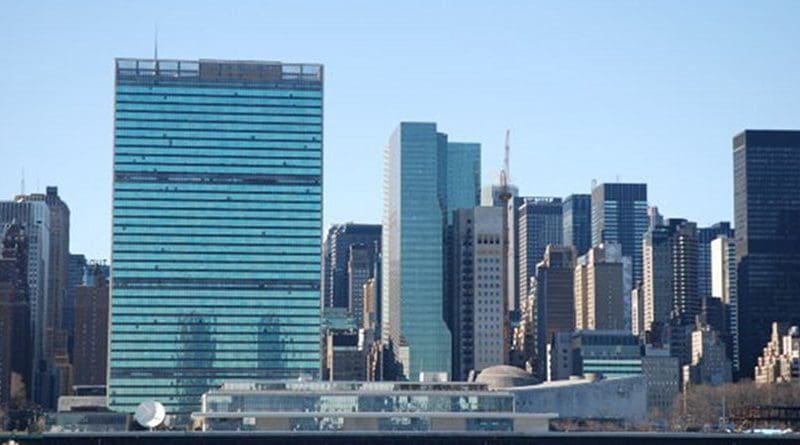UN’s Unsustainable Sustainable Development Goals – OpEd
At this year’s UN General Assembly’s gathering of world leaders, a top agenda is to review the progress of Sustainable Development Goals (SDGs) 2030, which aim to eradicate poverty, inequality, gender discrimination, lack of access to water, energy, sanitation, education, sustainable cities, and the like. The 17 SDGs, adopted in 2015, represent an ambitious follow-up to the Millennium Development Goals, which had “mixed results” per the admission of the then UN Secretary General Ban Ki-Moon. A big question is, of course, whether the SDG 2030 will fair any better?
The answer to this question hinges on multiple factors, such as the integration of SDGs with the national policies of UN member states, which is why so many countries have set up their own monitoring mechanism, as well as the overall health of the world economy, global peace, and scope of development aid by the wealthy nations to the poor nations, in order to close the poverty and inequality gap, which is in fact growing. In this regard, Japan’s reported commitment of some eight billion dollars to the lofty SDG objective is a welcome step in the right direction that ought to be replicated by other wealthy nations. Unfortunately, US under President Donald Trump swims in the opposite direction of viewing the SDGs as “niche issue,” in light of the recent US complaints at the G-7 summit, featuring several African leaders around the issue of inequality. The Trump administration has an anti-UN bias and has reduced US’s financial contribution to UN, which struggles to make a meaningful impact on the state of world economy in favor of the SDGs.
But, in some respects this is a hopeless cause. UN is not a preeminent world economic institution and has few resources at its disposal to tackle the huge goals it has set for itself, as a result burdening itself with the heavy boulders that make it crawl on the edge of world economy. The net result is a UN ‘talking shop’ that promises much and, yet, delivers very little, its widening gaps between its promises and its realized objectives constantly a reminder of its impotence. Yet, try as it must, as an inter-governmental world body, even if its failure to reach its 2030 SDGs is all but guaranteed.
Those goals are, as a matter of fact, for the most part less as concrete objectives and more as mere orientations, in tune with the UN’s ‘desire machine,’ desiring a better and more secure life for the planets inhabitants, especially those in the ‘South’. As a result, the 17 goals are listed without any discernible set parameters of success, abstractly put so as to avoid the MDGs flaw of setting the bar too high and, consequently, becoming a source of embarrassment. Concerning the latter, for sure extreme poverty has been curtailed world-wide, but this is principally due to the combined efforts of China and India to pull millions out of dire poverty, rather than due to the UN-led efforts.
There are different ways to measure poverty and, one may argue, the line has been drawn too low, at $1.90 a day, to account for persistent poverty of literally several hundred million people, likely to increase in the coming years if there is a global economic slow down. Already, there are projections of some 200 million children in extreme poverty by 2030, and that is a conservative estimate.
Perhaps if UN would set up a special UN fund for development, as called for by some non-aligned members, and return to the lost vision of a new international economic order, which dominated the UN discourse during the 1970s without much result, we could then begin to see some real progress toward the SDGs.
As it stands, with little or no economic teeth, UN is helplessly beholden to financial contributions by member states to run its own bureaucracy and various peace and refugee and health and food and other operations, overburdened by expectations far exceeding its ability to deliver the ‘deliverables’.
In turn, this raises a curious question: is the current UN addiction to lofty grand ideas such as SDGs sustainable from the prism of UN’s own interest?
It is one thing to ‘care for the world’ and another to come to the world’s rescue. A fundamental, and radical, restructuring of the global hierarchies and the state of world governance is a sine qua non for a successful UN intervention in global economic matters and decision-making, hitherto made outside its purview.
The irony is that while UN continues to churn bigger and bigger agenda, such as MDGs and SDGs, it is less and less capable of proving an effective instrument of realizing those objectives, as a result of which all the “high-level” reports and panels and so on in the end amount to very little, other than as a badge of UN’s ineffectiveness and sub-optimal performance.
Of course, the above criticisms should not be confused with a complete rejection of UN’s initiative. Concrete progress on such issues as gender equality and access to education can be obtained and measured, whereas abstract goals such as changing “production patterns” and making cities “sustainable” are more difficult to operationalize at UN level.
Not only that there are far too many goals and the UN has spread its wing too wide, it has also omitted such important goals as protecting the wild life, in light of the growing number of animals facing extinction due to runaway urbanization, deforestation, and lack of adequate protection of animals.
Certainly, this is one doable goal that deserves inclusion in the SDG list, sadly missing. The latter is basically attributable to an underlying anthropocentric mindset that pervades throughout the SDG list, save the one on sustaining marine life.

